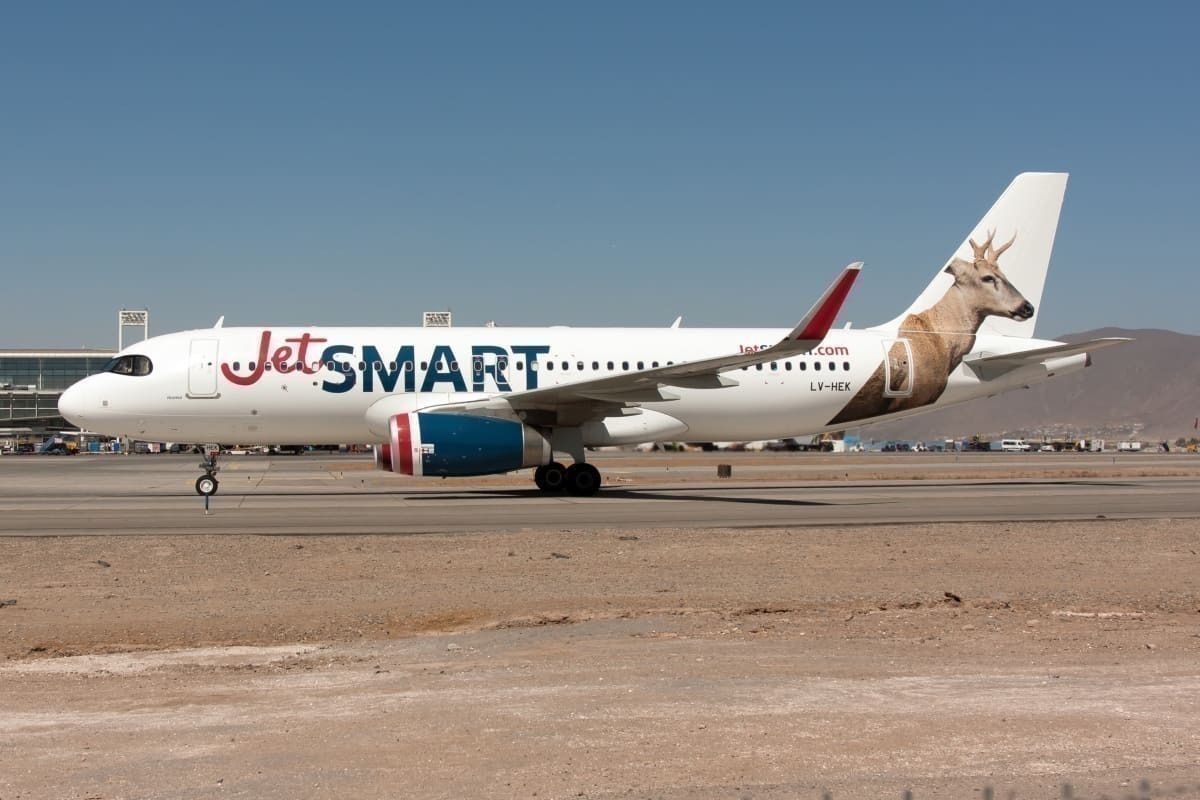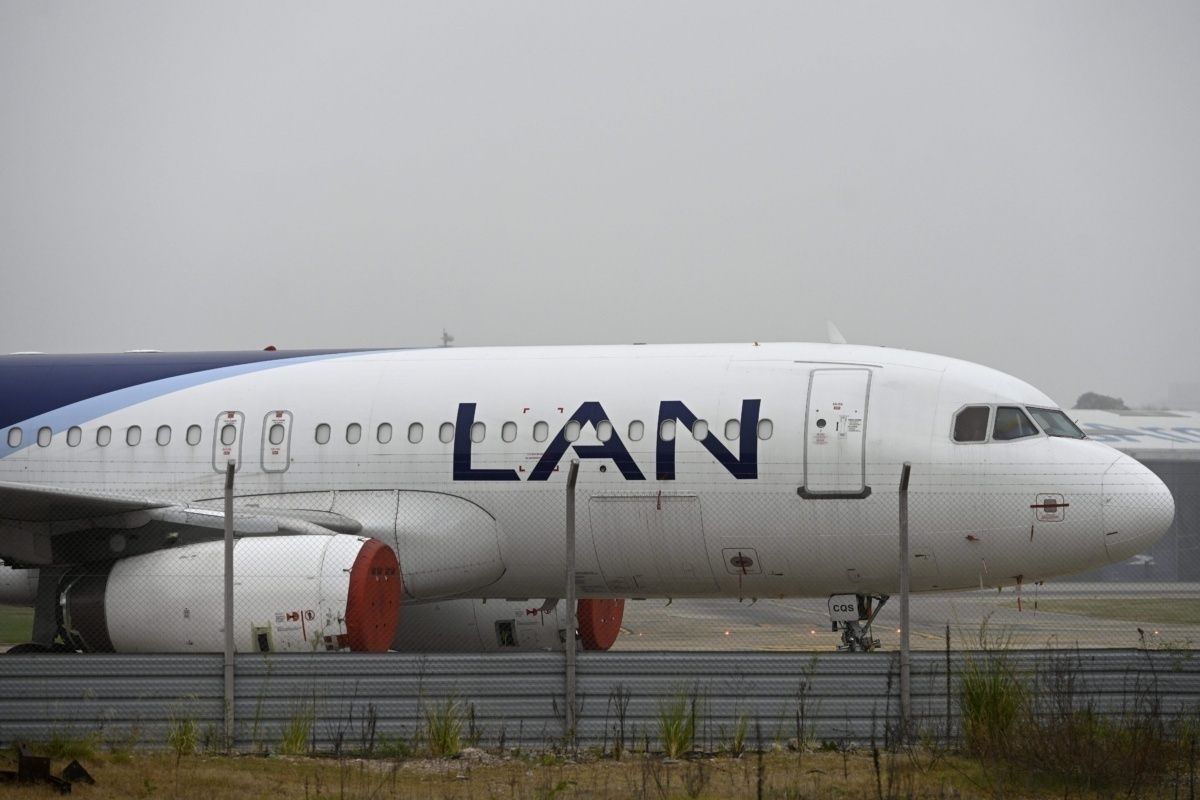JetSMART is a Chilean low-cost carrier that is expecting to increase its presence in South America. Last month, we reported that the airline plans to launch a branch in Peru. Now, it seems to be looking at Colombia, Brazil, and Uruguay. Is JetSMART ready to become a powerhouse in the region?
Where did JetSMART come from?
The Chilean low-cost airline is not very old. It was founded in 2016 but is backed up by one of the most prestigious firms in the industry, Indigo Partners. Currently, JetSMART has a fleet of 17 airplanes and has its main hub at Santiago de Chile International Airport. It also has a branch in Argentina, after Norwegian left that country last year.
Stay informed: Sign up for our daily aviation news digest.
As of August 2019, JetSMART had a 15% domestic market share in Chile. LATAM Airlines Group had a 59.2% and Sky Airline (another low-cost carrier) had 25%. Nevertheless, the growth of JetSMART has been incredible. In 2016, LATAM had 73.6% domestic market share and Sky 26%. According to CAPA, the next year, JetSMART launched into the South American skies with a 3% passenger share.
In October 2019, the airline took delivery of its first Airbus A320neo. According to Flight Connections, JetSMART served 12 domestic and nine international destinations in five countries before the pandemic. It flies to Argentina, Brazil, Colombia, and Peru.
What are its plans in Colombia and Brazil?
Currently, JetSMART is starting to fly again to several countries in Latin America after months of inactivity. Since August 7th, it asked the Brazilian Government to fly from Santiago to Foz do Iguazu, Salvador, and Sao Paulo.
To Argentina, Colombia, and Peru, JetSMART still has to wait for the Governments to open up their airspaces. Currently, Colombia and Peru are set to open up its international borders on 31 August, Argentina, one day later.
According to local media, JetSMART is interested in operating in Brazil, Colombia, Peru, and Uruguay. Estuardo Ortiz, CEO of the carrier, said,
“We are planning to increase our expansion taking as our base the recovering market. We are in a good position to do it.”
In Uruguay, members of the low-cost carrier recently had a meeting with the Ministry of Transportation, according to Aeroin. To begin with, JetSMART is thinking only about making direct routes from Santiago to Montevideo. Nevertheless, it keeps open up the possibility of launching a new branch in Uruguay.
These three plans are still in the developing stages, so there’s a long way to go. As we said, JetSMART still has a small fleet, but it can dream big. Let’s see why.
Can it pull it off?
JetSMART is backed up by Indigo Partners. We’ve seen the success the group has had by launching (or helping launch) low-cost airlines across the world. The private equity firm controls Frontier Airlines in the US. It also has stakes in Volaris in Mexico and Costa Rica and Wizz Air in Europe.
If the low-cost carrier can pull through the current pandemic, it will find itself in a different world. Before coronavirus, LATAM Airlines Group was the undoubted master of the Chilean airspace. But, since LATAM is currently under a Chapter 11 filing, it is expected to shrink. It has already dropped a few domestic and international routes from Chile. JetSMART and Sky Airline can grow.
In Colombia, Avianca is also in Chapter 11. LATAM also has a branch in Colombia. Also, the small regional player EasyFly is in a reorganization process. So the Colombian airline industry is set to change.
In Brazil, LATAM also has a branch. GOL Linhas Aereas is facing significant uncertainty and maybe won’t survive the year. Azul Linhas Aereas is set to become a significant player in that country. Finally, in Uruguay, the most important carrier is Amaszonas Uruguay. It is mainly connected by airlines from other countries like Aerolíneas Argentinas. Those are the potential rivals for JetSMART.
The Chilean low-cost carrier has every possibility to grow. It will be a very interesting story to follow in the next few years.
What do you think about JetSMART’s plans? Let us know in the comments.



